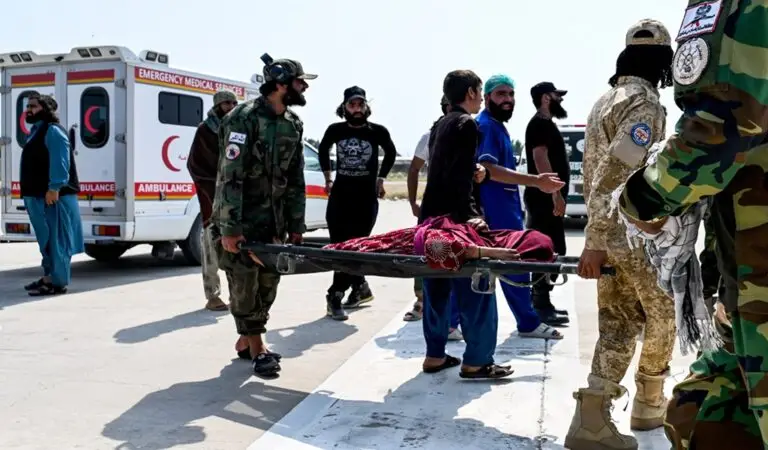A midnight earthquake has torn through Afghanistan’s eastern provinces, collapsing mud-brick homes, severing roads, and leaving a trail of devastation across mountainous Kunar and Nangarhar. With over 800 people reported dead and thousands injured, the already fragile country has been thrust into another humanitarian nightmare.
The quake — shallow, fierce, and followed by a series of strong aftershocks — struck just before midnight, jolting residents from sleep and prompting panic across the eastern frontier. From Kabul to Islamabad, the tremor was felt, but it was the remote valleys of Kunar that bore the brunt.
Entire villages vanished beneath the rubble. Makeshift homes constructed by returnees — Afghan families deported or displaced from Pakistan and Iran — now lie in ruins. These families, some of whom had only recently begun to rebuild lives in their ancestral homeland, have once again been uprooted, many now homeless, injured, or lost.
Human Toll Mounts as Rescue Efforts Struggle Against Terrain
Taliban officials confirmed over 800 deaths in Kunar alone, with an additional 255 injured in neighboring Nangarhar. With roads blocked by debris and communications down, several villages remain cut off from rescue teams. Local residents have taken it upon themselves to clear routes by hand, desperate to reach relatives and survivors in hard-hit zones.
Interior ministry representatives described the destruction as widespread, with hundreds of homes flattened. The majority of structures in the area are built from unreinforced mud bricks, rendering them dangerously vulnerable to seismic activity.
Eyewitnesses recounted the terror. “People were screaming in the dark. Children, women — everyone was running. Our houses just cracked and collapsed around us,” said one resident from Nurgal district, his voice tight with shock.
Relief Operations Underway Amid Infrastructure Collapse
The Taliban government and international agencies have mobilized aerial sorties and on-ground rescue units. Afghanistan’s defense ministry confirmed more than 40 helicopter operations launched to deliver aid and evacuate the injured.
Still, conditions remain dire. Access to remote hamlets is hindered by landslides and fractured roads. Aid workers warn of looming threats: unsanitary conditions, lack of shelter, and food insecurity — all amplified by the region’s fragile healthcare infrastructure.
The earthquake also follows a recent flash flood in Nangarhar that claimed five lives, deepening the region’s disaster fatigue. With Afghanistan facing multiple climate-driven crises, the compounded impact of disasters is eroding whatever resilience remains.
Tectonic Wrath Meets Political Fragility
Afghanistan sits atop a volatile fault line where the Indian and Eurasian plates grind violently. Earthquakes are tragically common. But the scale of this disaster — occurring amidst political isolation, slashed foreign aid, and institutional decay — has magnified its toll.
The epicenter, near the provincial capital of Jalalabad, was dangerously shallow — less than 10 kilometers deep — unleashing maximum surface-level devastation. Aftershocks, including a magnitude-5.2 tremor hours later, intensified public fear and damaged already unstable structures.
The United Nations and global leaders, including the UN Secretary-General, extended condolences and urged coordinated humanitarian support. Yet with most foreign aid halted since the Taliban’s return to power, Afghanistan’s emergency response capabilities remain severely limited.
The Road Ahead: Rebuilding Amid Rubble
This disaster adds to the long list of recent seismic catastrophes in Afghanistan: Herat in 2023, Paktika in 2022, and now Kunar in 2025. Each one has underscored the same brutal lesson — that Afghanistan’s most vulnerable remain exposed, physically and politically, to the forces of nature.
As survivors begin to sift through rubble, bury the dead, and seek shelter, one question reverberates through the valleys: who will rebuild this time?
With winter approaching and aid pipelines choked, Afghanistan faces a race against time — not just to rescue those trapped, but to prevent an earthquake from triggering yet another humanitarian collapse.






